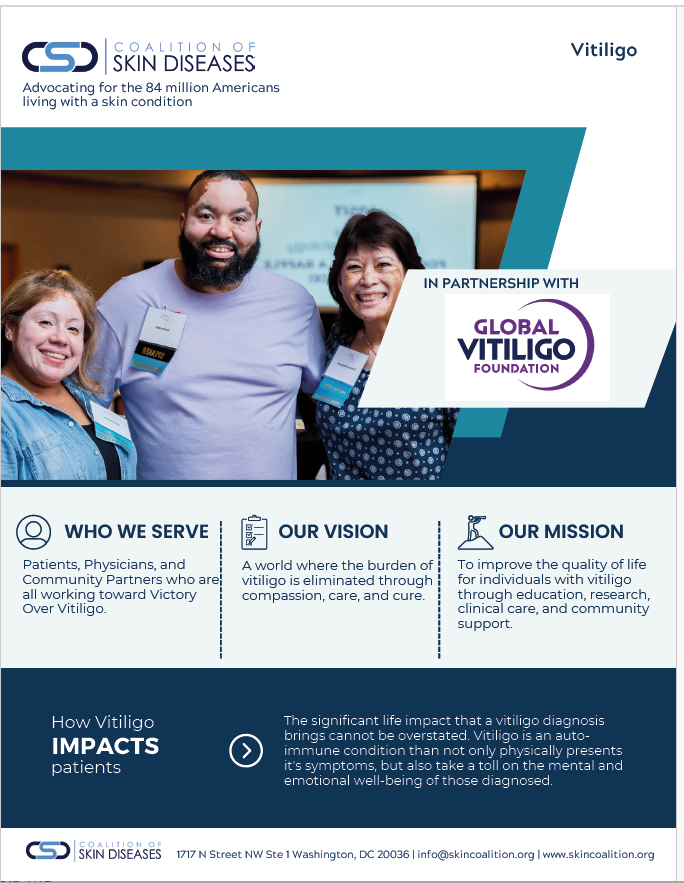Vitiligo is an autoimmune skin disease causing loss of pigment from areas of the skin, resulting in irregular white spots or patches.
There are several types of vitiligo: Segmental (SV), Non-segmental (NSV) and Mixed Vitiligo (MV). The most common type of vitiligo is Generalized Vitiligo, a progressive subtype of NSV which often presents with unpredictable cycles of spreading and stability throughout life.
Vitiligo is NOT contagious.
Vitiligo affects about 0.5% to 1% of the population (~70 million) and can start at any age, but about half of those with vitiligo develop it before the age of 20, and about 95% before age 40. An estimated 20-35% of patients are children. It affects both genders, and all races and ethnicities.
A physician may use a Woods light (specialized black light) to confirm vitiligo, as even when undetectable by the eye alone, the depigmented areas will glow under this light. The physician will collect medical history. Important factors are a family history of vitiligo or other autoimmune diseases; a rash, sunburn, or other skin trauma at the site of vitiligo 2 to 3 months before depigmentation started; stress or physical illness. The physician may take a small sample (biopsy) of the affected skin, and/or a blood sample to do lab work that checks for thyroid antibodies/disease, vitamin D levels, and other conditions that may affect general health or autoimmune status.
There is, currently, no known cure. Treatments fall into four main groups: Topical, Phototherapy, Oral and Surgical. Most physicians use a combination of therapies to assist the patient. Various treatments, including topical creams and light therapy, can help some patients regain pigment. Many of the currently available treatments are not covered by insurance.
To improve the quality of life for individuals with vitiligo through education, research, clinical care, and community support.
A world where the burden of vitiligo is eliminated through compassion, care, and cure.
Website: globalvitiligofoundation.org
Email: [email protected]
Twitter: twitter.com/StepUp4Vitiligo
Facebook: www.facebook.com/stepupforvitiligo
Instagram: www.instagram.com/globalvitiligofoundation
Patient Social Network: www.myvitiligoteam.com

Connect with your federal legislators to speak up for dermatological conditions today.